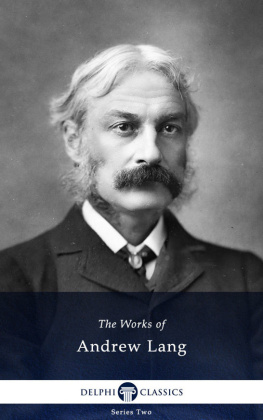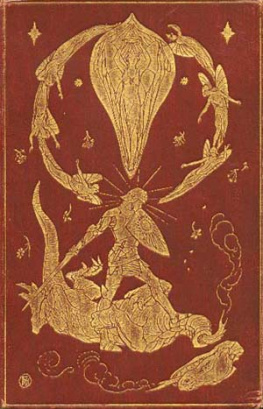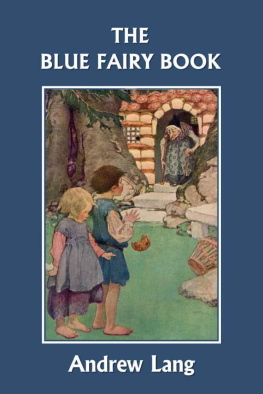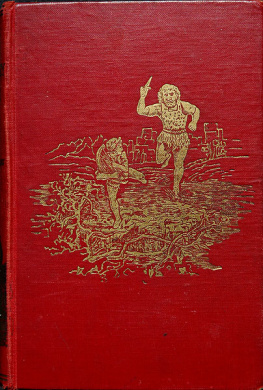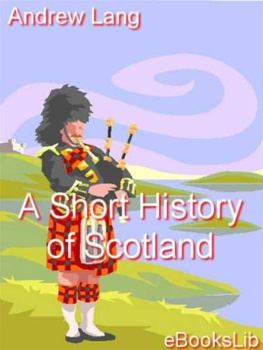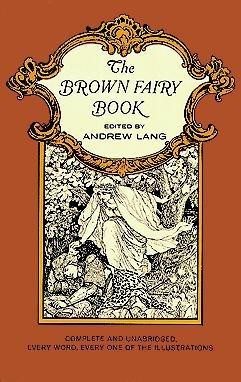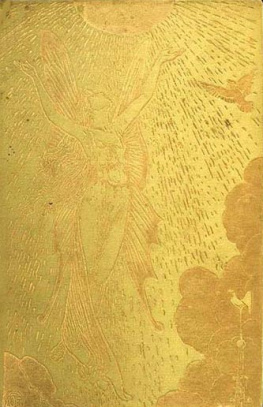PREFACE TO NEW IMPRESSION.
Table of Contents
When this book first appeared (1886), the philological school of interpretation of religion and myth, being then still powerful in England, was criticised and opposed by the author. In Science, as on the Turkish throne of old, "Amurath to Amurath succeeds"; the philological theories of religion and myth have now yielded to anthropological methods. The centre of the anthropological position was the "ghost theory" of Mr. Herbert Spencer, the "Animistic" theory of Mr. E. R. Tylor, according to whom the propitiation of ancestral and other spirits leads to polytheism, and thence to monotheism. In the second edition (1901) of this work the author argued that the belief in a "relatively supreme being," anthropomorphic was as old as, and might be even older, than animistic religion. This theory he exhibited at greater length, and with a larger collection of evidence, in his Making of Religion.
Since 1901, a great deal of fresh testimony as to what Mr. Howitt styles the "All Father" in savage and barbaric religions has accrued. As regards this being in Africa, the reader may consult the volumes of the New Series of the Journal of the Anthropological Institute, which are full of African evidence, not, as yet, discussed, to my knowledge, by any writer on the History of Religion. As late as Man, for July, 1906, No. 66, Mr. Parkinson published interesting Yoruba legends about Oleron, the maker and father of men, and Oro, the Master of the Bull Roarer.
From Australia, we have Mr. Howitt's account of the All Father in his Native Tribes of South-East Australia, with the account of the All Father of the Central Australian tribe, the Kaitish, in North Central Tribes of Australia, by Messrs. Spencer and Gillen (1904), also The Euahlayi Tribe, by Mrs. Langley Parker (1906). These masterly books are indispensable to all students of the subject, while, in Messrs. Spencer and Gillen's work cited, and in their earlier Native Tribes of Central Australia, we are introduced to savages who offer an elaborate animistic theory, and are said to show no traces of the All Father belief.
The books of Messrs. Spencer and Gillen also present much evidence as to a previously unknown form of totemism, in which the totem is not hereditary, and does not regulate marriage. This prevails among the Arunta "nation," and the Kaitish tribe. In the opinion of Mr. Spencer (Report Australian Association for Advancement of Science, 1904) and of Mr. J. G. Frazer (Fortnightly Review, September, 1905), this is the earliest surviving form of totemism, and Mr. Frazer suggests an animistic origin for the institution. I have criticised these views in The Secret of the Totem (1905), and proposed a different solution of the problem. (See also "Primitive and Advanced Totemism" in Journal of the Anthropological Institute, July, 1906.) In the works mentioned will be found references to other sources of information as to these questions, which are still sub judice. Mrs. Bates, who has been studying the hitherto almost unknown tribes of Western Australia, promises a book on their beliefs and institutions, and Mr. N. W. Thomas is engaged on a volume on Australian institutions. In this place the author can only direct attention to these novel sources, and to the promised third edition of Mr. Frazer's The Golden Bough.
A. L.
PREFACE TO NEW EDITION.
Table of Contents
The original edition of Myth, Ritual and Religion, published in 1887, has long been out of print. In revising the book I have brought it into line with the ideas expressed in the second part of my Making of Religion (1898) and have excised certain passages which, as the book first appeared, were inconsistent with its main thesis. In some cases the original passages are retained in notes, to show the nature of the development of the author's opinions. A fragment or two of controversy has been deleted, and chapters xi. and xii., on the religion of the lowest races, have been entirely rewritten, on the strength of more recent or earlier information lately acquired. The gist of the book as it stands now and as it originally stood is contained in the following lines from the preface of 1887: "While the attempt is made to show that the wilder features of myth survive from, or were borrowed from, or were imitated from the ideas of people in the savage condition of thought, the existenceeven among savagesof comparatively pure, if inarticulate, religious beliefs is insisted on throughout". To that opinion I adhere, and I trust that it is now expressed with more consistency than in the first edition. I have seen reason, more and more, to doubt the validity of the "ghost theory," or animistic hypothesis, as explanatory of the whole fabric of religion; and I present arguments against Mr. Tylor's contention that the higher conceptions of savage faith are borrowed from missionaries.(1) It is very possible, however, that Mr. Tylor has arguments more powerful than those contained in his paper of 1892. For our information is not yet adequate to a scientific theory of the Origin of Religion, and probably never will be. Behind the races whom we must regard as "nearest the beginning" are their unknown ancestors from a dateless past, men as human as ourselves, but men concerning whose psychical, mental and moral condition we can only form conjectures. Among them religion arose, in circumstances of which we are necessarily ignorant. Thus I only venture on a surmise as to the germ of a faith in a Maker (if I am not to say "Creator") and Judge of men. But, as to whether the higher religious belief, or the lower mythical stories came first, we are at least certain that the Christian conception of God, given pure, was presently entangled, by the popular fancy of Europe, in new Marchen about the Deity, the Madonna, her Son, and the Apostles. Here, beyond possibility of denial, pure belief came first, fanciful legend was attached after. I am inclined to surmise that this has always been the case, and, in the pages on the legend of Zeus, I show the processes of degeneration, of mythical accretions on a faith in a Heaven-God, in action. That "the feeling of religious devotion" attests "high faculties" in early man (such as are often denied to men who "cannot count up to seven"), and that "the same high mental faculties would infallibly lead him, as long as his reasoning powers remained poorly developed, to various strange superstitions and customs," was the belief of Mr. Darwin.(2) That is also my view, and I note that the lowest savages are not yet guilty of the very worst practices, "sacrifice of human beings to a blood-loving God," and ordeals by poison and fire, to which Mr. Darwin alludes. "The improvement of our science" has freed us from misdeeds which are unknown to the Andamanese or the Australians. Thus there was, as regards these points in morals, degeneracy from savagery as society advanced, and I believe that there was also degeneration in religion. To say this is not to hint at a theory of supernatural revelation to the earliest men, a theory which I must, in limine disclaim.
(1) Tylor, "Limits of Savage Religion." Journal of the Anthropological Institute, vol. xxi.




